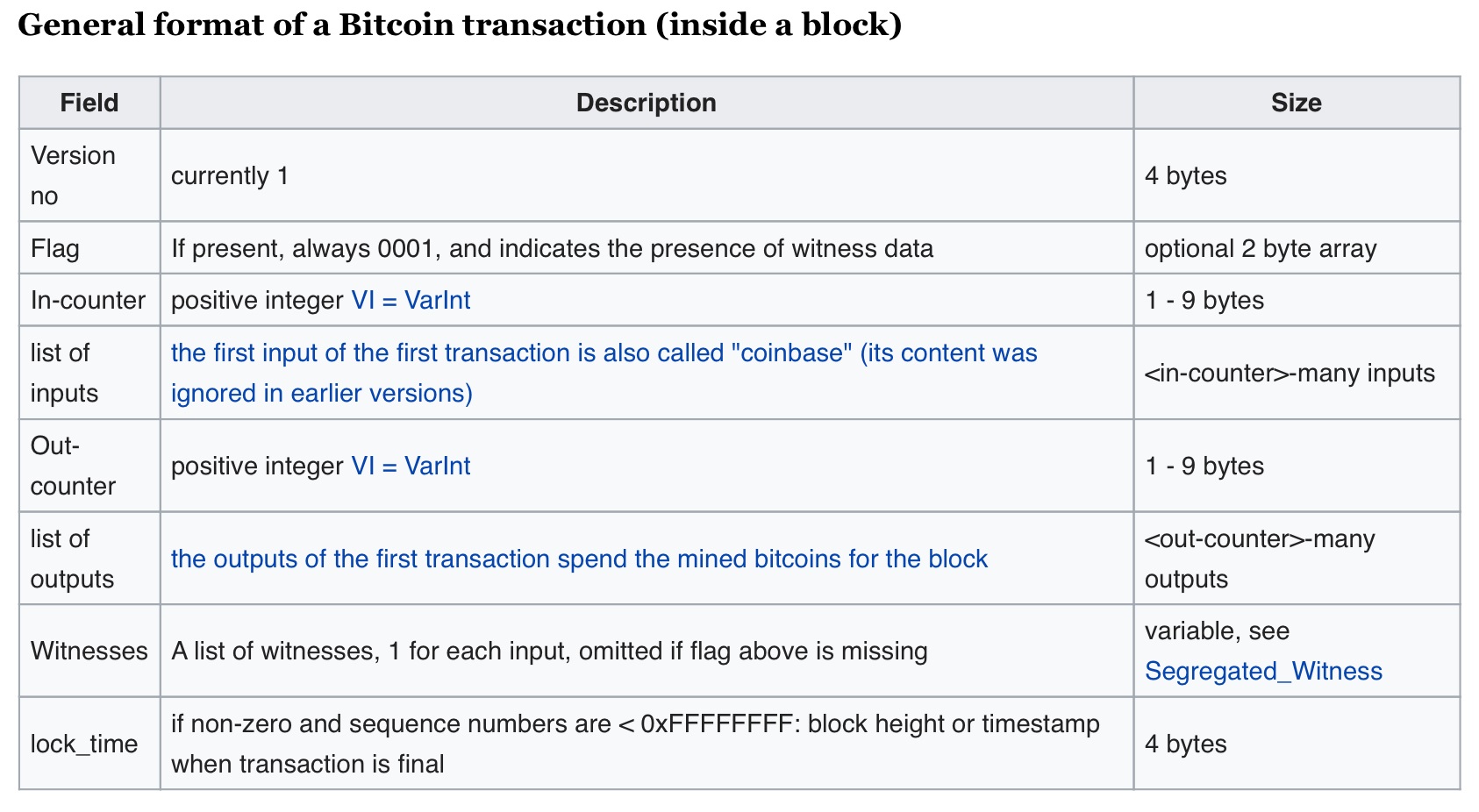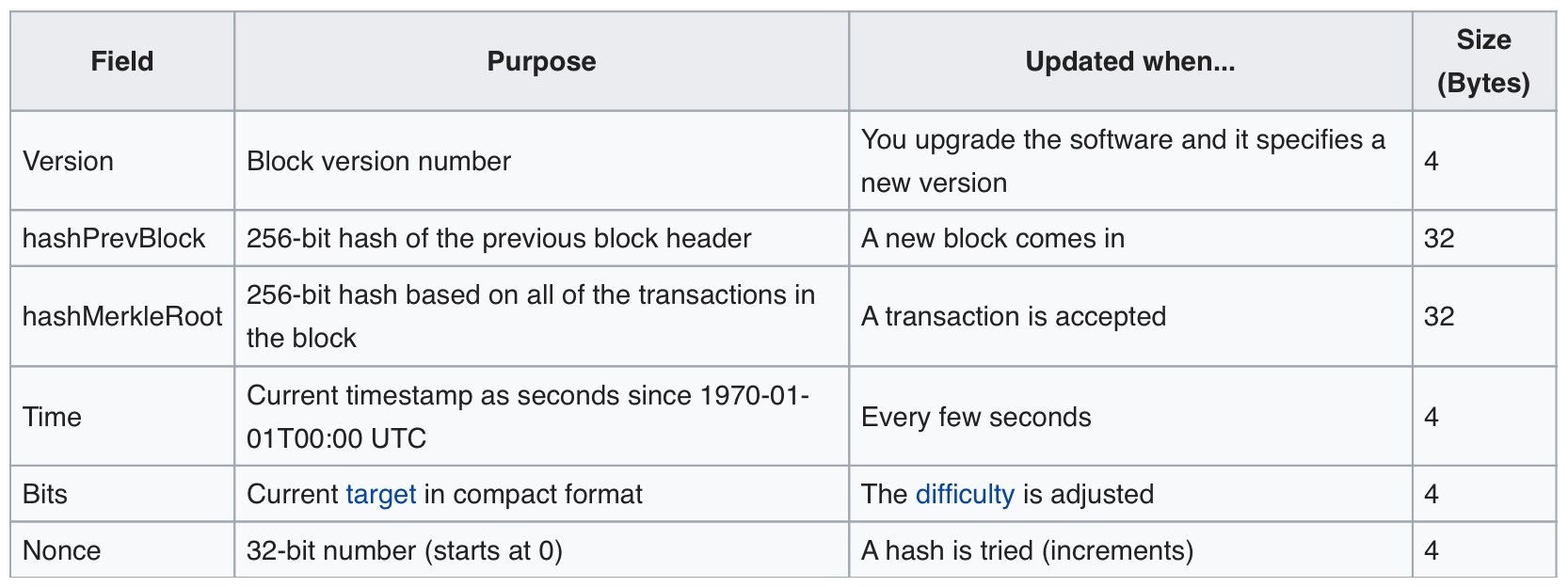At a financial institution, a ledger is a book for recording financial transactions. Similarly, Bitcoin maintains a ledger for bookkeeping BTC transactions and balances by address. One key difference is that a bank's ledger is centralized and Bitcoin's ledger is decentralized. Consequently, a bank's ledger is much easier to be cooked. On the other side, Bitcoin's ledger is very difficult to cook as one has to change the ledger at all nodes worldwide.
A user submits a transaction containing the following information:
- Sources of the BTCs to be transferred from
- The amount of BTCs to be transferred
- Destinations the BTCs should be transferred to
As per the Wiki site, a transaction has a general structure shown as follows:

Both source and destination addresses are 64-character hashes. Here is an example of an address: 979e6b063b436438105895939f4ff13d068428d2f71312cf5594c132905bfxy1.
The term address is a bit confusing. A programmer may think it to be an address related to a disk or memory location. However, it has nothing to do with a physical location. Instead, it is a logical label for grouping BTCs that have been transferred from/to it. In a way, one can think of it as a bank account number, yet there are fundamental differences between them. For example, a bank has a centralized place where metadata on an account, for instance, owner name, account open date, and account type, is saved. In addition, the account balance is precalculated and saved. In Bitcoin, there is no metadata on an address and one has to query the entire ledger to find the balance of an address by counting the net BTCs being transferred in and out of the address. Addresses are referred to only in Bitcoin transactions. When the balance of an address falls to 0, any future request for taking BTCs from the address will fail the transaction validation due to insufficient funds.
Bitcoin utilizes the UTXO model to manage its BTC transfer. The term was introduced by cryptocurrency, where it refers to an unspent transaction output. This is an output of a blockchain transaction that has not been spent and can be used as an input for a future transaction. In a Bitcoin transaction, only unspent outputs can be used as an input, which helps to prevent double spending and fraud. As a result, a committed transaction results in deleting inputs on a blockchain and creating outputs in the form of UTXOs. The newly created unspent transaction outputs can be spent by the owner holding the corresponding private keys. In other words, UTXOs are processed continuously and a committed transaction leads to removing spent coins and creating new unspent coins in the UTXO database.
Like an address, a BTC is not associated with any physical object such as a digital token file or a physically minted coin. Instead, it only exists in transactions in the distributed ledger. For example, if one wants to know the total number of BTCs minted so far, one has to go through all nonzero balance addresses on the blockchain and add up all the BTCs. Since every node of Bitcoin keeps a copy of the ledger, it is only a matter of taking computing time to find an answer.
When a user enters a BTC transaction request at a node, Bitcoin software installed at the node broadcasts the transaction to all nodes. Nodes on the network will verify the validity of the transaction by retrieving all historical transactions containing the input addresses and ensuring that BTCs from these addresses are legitimate and sufficient. After that, the mining nodes start to construct a block by collecting the verified transactions. Normally, a Bitcoin block contains between 1,500 to 2,000 transactions. A miner who wins the race to resolve a difficult mathematical puzzle gets the role to build and link a new block to the chain. On the Bitcoin blockchain, a new block is created around every 10 minutes. As of September 21, 2018, approximately 542,290 blocks have been created on Bitcoin. The structure of a Bitcoin block is shown as follows:

Here, the block header contains the following fields:

The concept of a nonce will be explained in the subsection on mining. hashPrevBlock is the same value as hashMerkleRoot. The Merkle tree hash root is essentially the hash of all transaction hashes in the block via a binary tree aggregation structure. The following diagram explains the idea:

